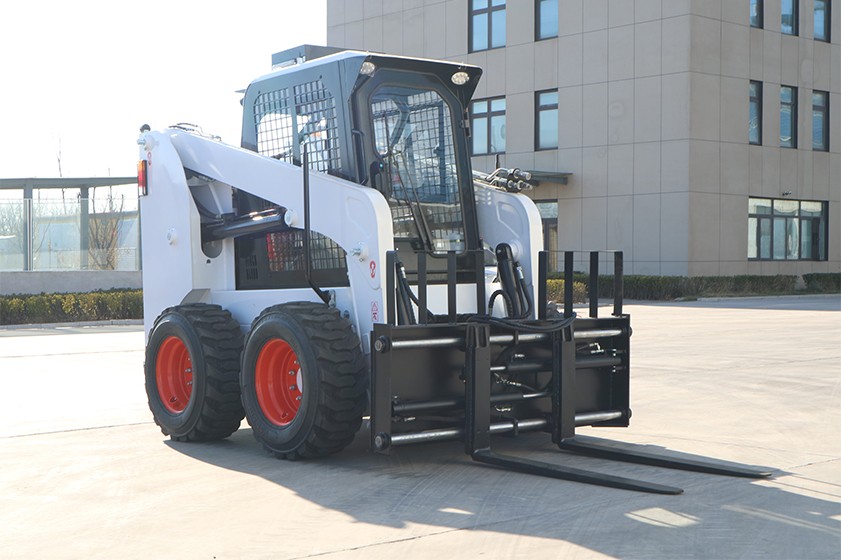News
How to choose a suitable high-performance skid steer loader?
Jul. 11, 2025
The skid loader is known as the "sharp knife" product among small construction machinery. With its powerful functions and flexible and maneuverable characteristics, it is widely used in infrastructure construction, road and bridge, dock loading and unloading, municipal maintenance, sanitation, residential and other narrow construction environments... It is a multifunctional work platform that can meet different tasks.
So, how to choose the right skid loader equipment for the construction site? The key is to understand the performance of the equipment and the content of the project, such as simple soil piling, lifting objects, material handling, etc.
Ryan Ruhl from John Deere likes to use the efficiency of the equipment to choose a skid loader. "It is the most reasonable method to figure out the size of the project and then choose the most suitable equipment to complete it." He believes that using inappropriate skid loader equipment will not only get twice the result with half the effort, but also cost more. For example, if the selected skid loader has insufficient lifting performance (insufficient power or hydraulic flow), it will reduce the efficiency of the equipment and extend the construction period.
Therefore, when choosing a skid loader, you should pay attention to the following points.
1. Model and power size
What engineering project you do determines what kind of equipment you choose. Does the equipment need to work in a narrow building space? Does it need extra traction to push piled items on soft or muddy ground? Does it need a higher lifting height and dumping distance to load materials onto trucks? Does it need to pass through narrow door frames or perform foundation backfilling operations?
Small skid steers generally have a power of less than 50 horsepower, medium-sized products have a power range of 50 to 70 horsepower, and large skid steers usually have more than 70 horsepower. Understanding the needs of the work can help us choose the right machine.
2. Selection of radial lift arm and vertical lift arm equipment
The radial lift arm of the skid steer loader swings to the highest point in an arc before reaching the highest point, while the vertical lift arm directly lifts upward and then outward to the highest point. If your equipment only works from the ground to the top of the cab, then radial lift equipment is a good choice. If you often need to work above the cab or higher, then you need a device with a vertical lift arm to complete the work.
For example, a radial lift skid steer is better suited for short-distance gravel transport and other tasks, because at the lowest point, the bucket is closer to the machine, which can provide additional power. However, if you often use the equipment to shovel materials to load dump trucks, a vertical lift skid steer is better because the bucket can reach a higher position.
3. What attachments are you going to use?
Many customers will purchase different attachments in addition, and high-flow hydraulic systems can provide more flow for attachments. So if you expect the equipment to do more work, the hydraulic system is very important. It is worth mentioning that the performance of the attachment is affected by the hydraulic flow and the engine horsepower, and these two factors determine the best performance of the work attachment.
Our experience is that when the attachment is a trencher or milling machine, the hydraulic system needs to provide a larger flow and the engine needs to provide a larger power. In addition, other attachments that require high-flow hydraulics include: wheel shovels, trenchers, snow blowers, etc.
4. Driving comfort and equipment automation
Many manufacturers have found that users are increasingly concerned about driving comfort and equipment control automation. When the operator has a comfortable seat, a quiet cab, a good view and convenient automated controls, work can be made easier, so work efficiency will also be improved to a certain extent.







